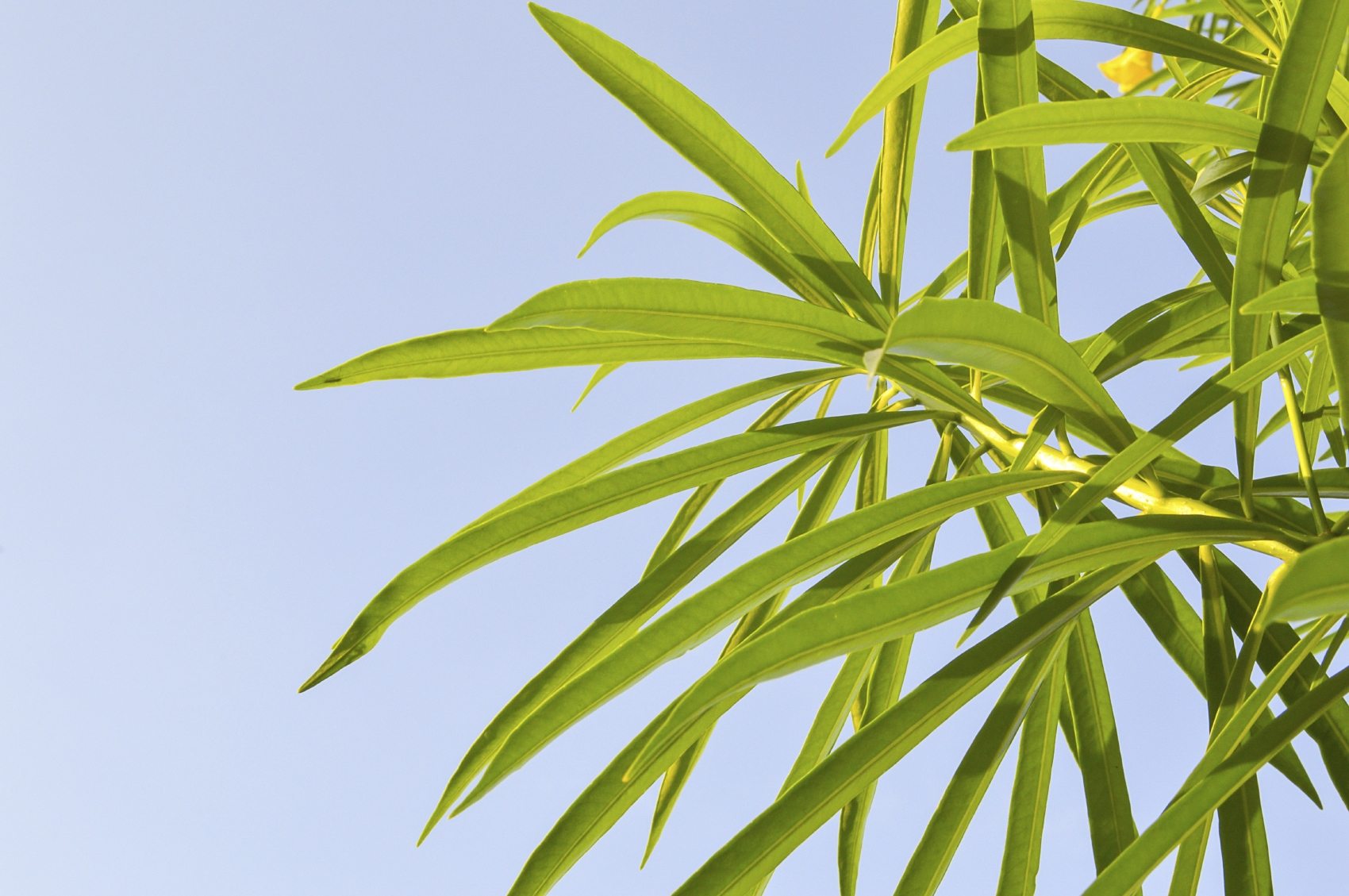Leaf Drop On Oleander – Reasons For Oleander Dropping Leaves


Oleander plants are drought tolerant, old-fashioned, southern garden gems. These toxic beauties produce breathtaking floral displays and are easy to maintain. There are several possible reasons for an oleander dropping leaves. If leaf drop is combined with yellowing, damaged foliage, signs of insects, or other issues, it is easier to narrow down the causes. Cultural conditions, pests, disease, and even herbicide drift can all cause oleander leaf drop. Read on for some possible causes and solutions to leaf drop on oleander.
Cultural Causes of Oleander Leaf Drop
Oleanders are more common in warm regions but can withstand winters in temperate zones. They are hardy to 35 degrees F. (2 C.) and have remarkable drought tolerance once established. The best blooms come from plants in full sun and well-drained soil with average water application. If you are providing these conditions and still wondering, "why is my oleander losing leaves?" we may be able to provide some answers. Too much water and too little water can cause yellowing leaves and leaf drop. In the summer, water the bushes one to two times per week, deeply. Make sure your plant is in well-draining soil. Soggy roots can be a cause of leaf drop on oleander. Oleanders don't need a lot of fertilizer, but in poor soils or in containers where nutrients are limited, apply a balanced food in spring to perk up your plants. Oleanders have extensive root masses but when planted with other competitive plants they can begin to get sickly, and foliage can suffer. Move the bushes if they are sited too close to a large tree or in an area with binding, thick growth at the root zone.
Oleander Dropping Yellow Leaves from Pests
One of the most common causes of many plant ills is insect pests. If you see your oleander dropping yellow leaves, it could be a sign of a pest invasion. These tiny invaders can do a lot of damage with their feeding activity. Sucking insects are particularly bad, and they are most active in hot weather. A species of aphid and one of scale are particular to oleander. If you can't spot the aphids, look for sticky honeydew or sooty mildew on the leaves. Both are a sign of their presence, as are ants, who feed on the sweet honeydew. Heavy infestations can be blasted off with water or you can use a horticultural oil spray. Scale will appear as whitish bumps on the stems of the plant and can also be combated with horticultural oil applied three times over the course of six weeks.
Oleander Leaf Scorch
Oleanders are quite trouble free in most cases, but there is a serious disease that affects plants (mainly in California). Oleander leaf scorch is caused by Xylella fastidiosa bacteria. This disease is primarily caused by insects called glassy winged sharpshooters and other species in the group. The effects can be devastating. It starts by causing a blockage of the water and nutrients to the roots. The results are gradually yellowing leaves, which eventually die and drop off. The disease has no cure, but pruning off the affected areas can slow the disease and help prevent it from spreading to neighboring oleanders. Destroy the infected plant parts. Do not put them in your compost pile. Sadly, over time you will lose your oleander, but good care and removal of infected material can prolong the life of the plant.
Sign up for the Gardening Know How newsletter today and receive a free copy of our e-book "How to Grow Delicious Tomatoes".

Bonnie Grant is a professional landscaper with a Certification in Urban Gardening. She has been gardening and writing for 15 years. A former professional chef, she has a passion for edible landscaping.